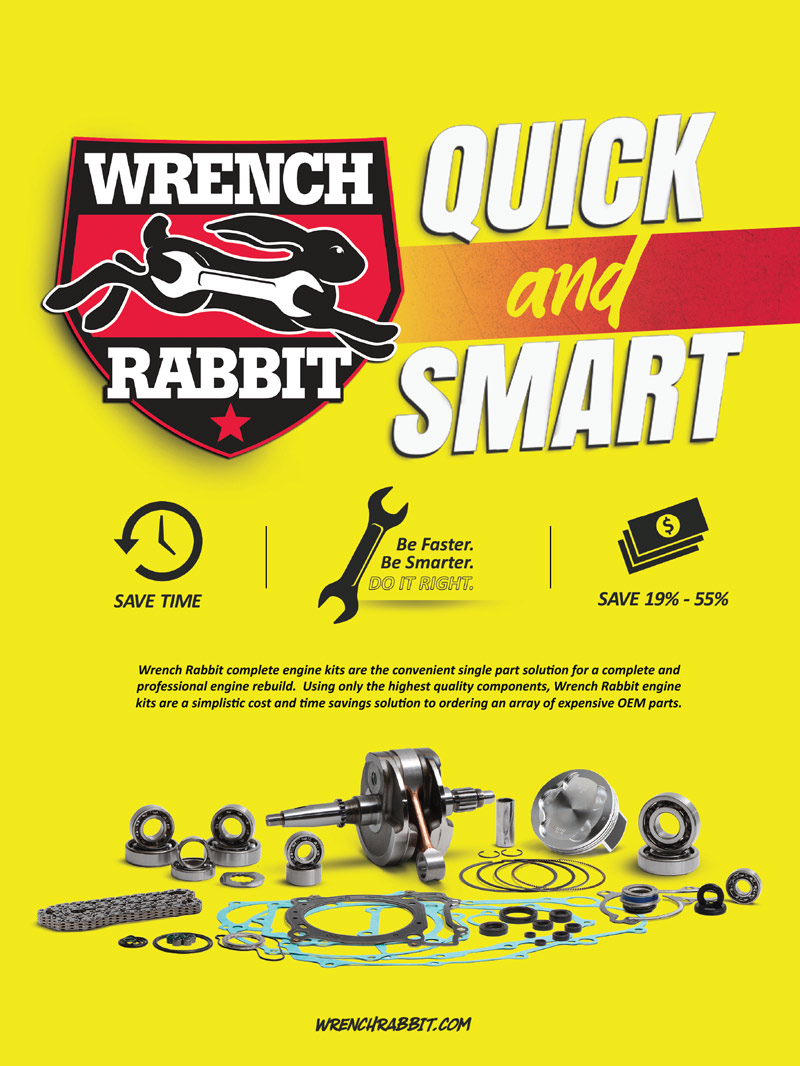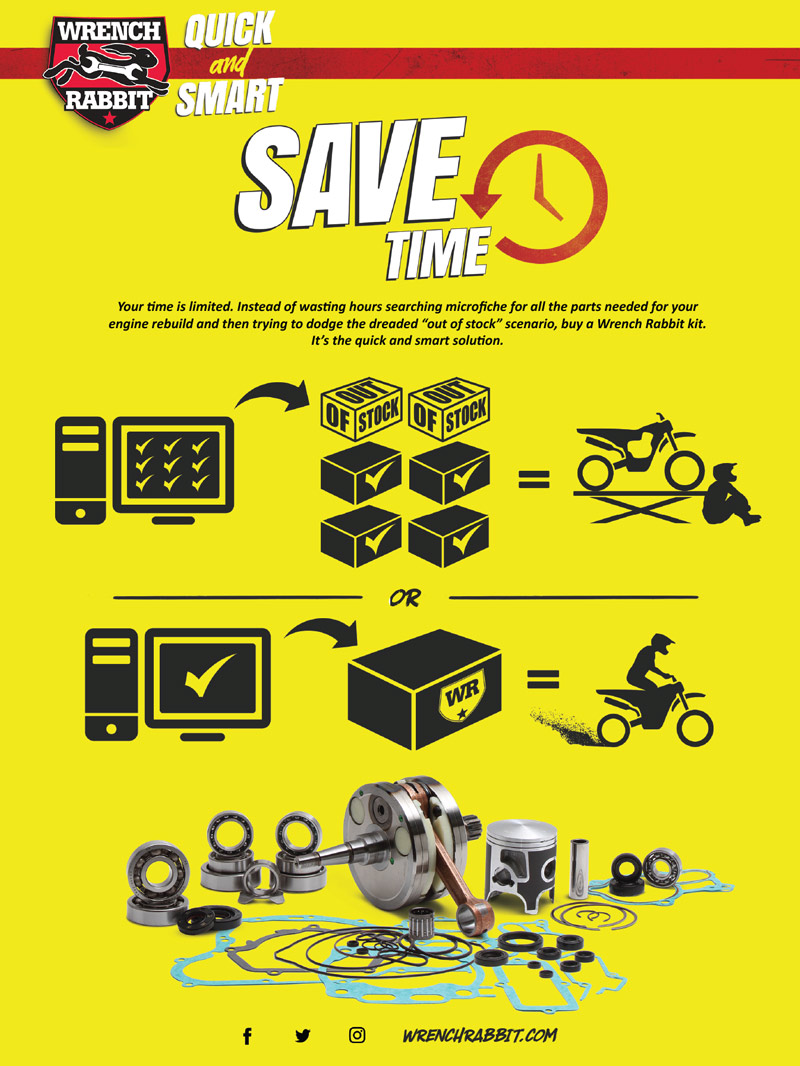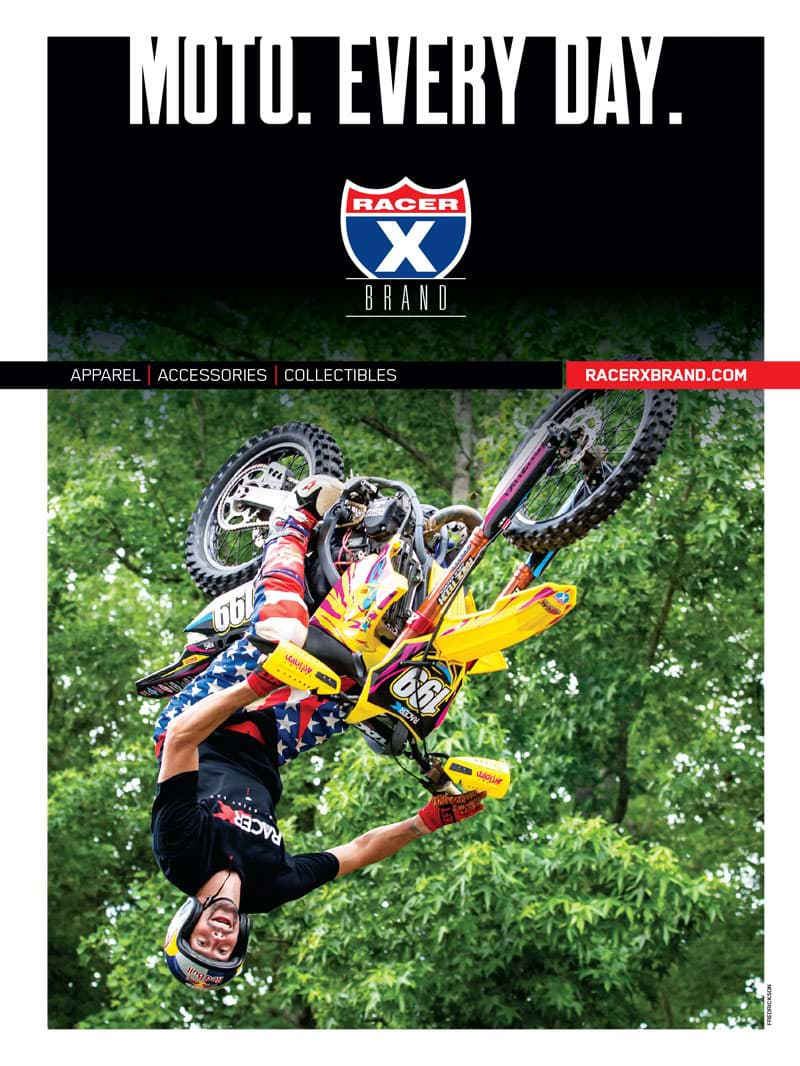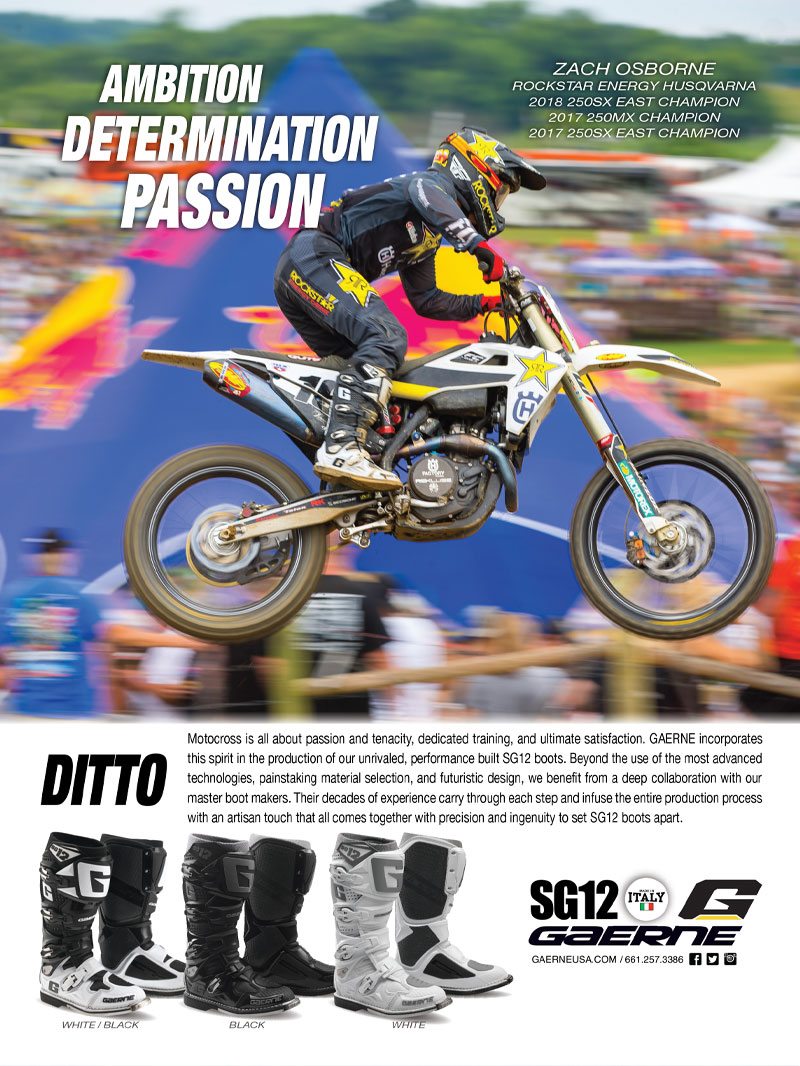
PHOTOS: RICH SHEPHERD, JEFF KARDAS, & SIMON CUDBY

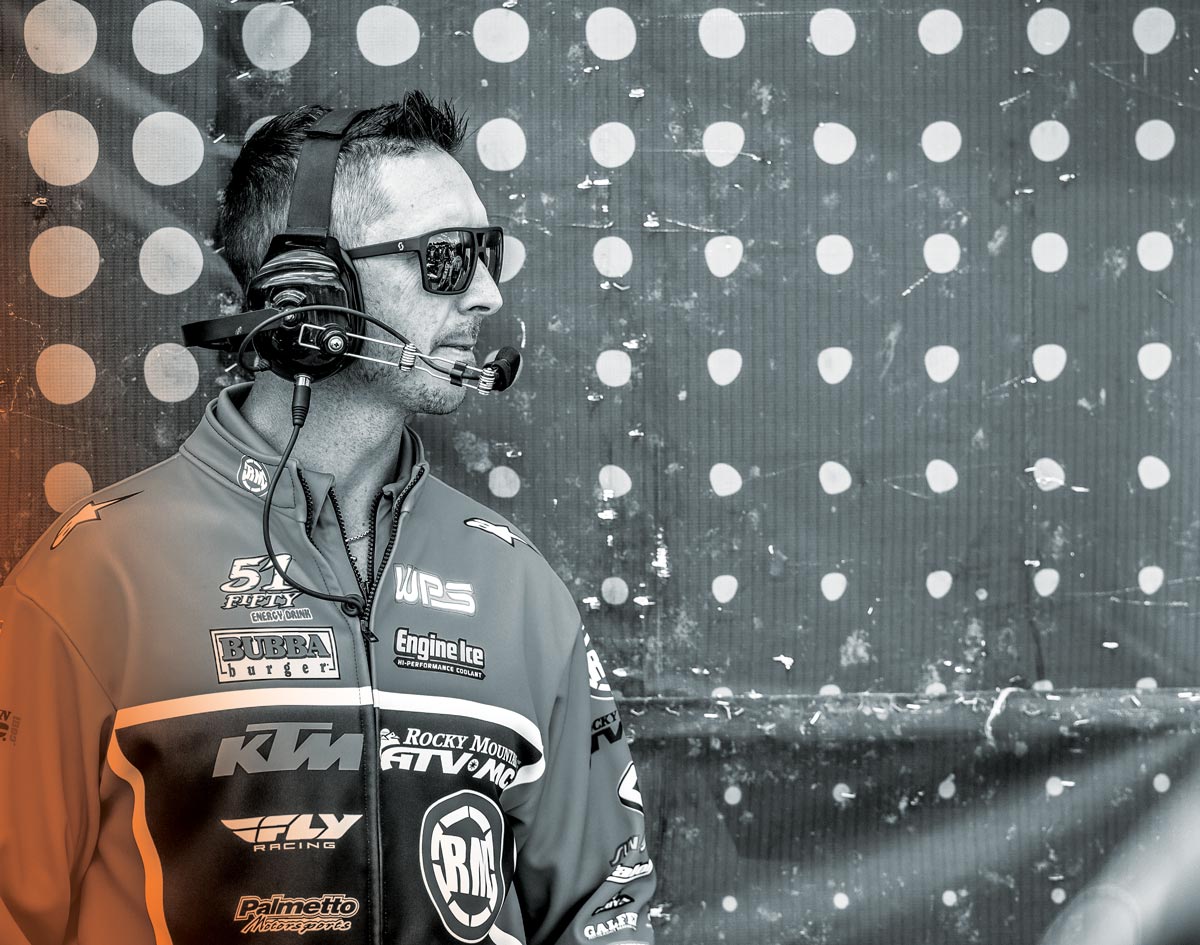

PHOTOS: RICH SHEPHERD, JEFF KARDAS, & SIMON CUDBY



n my experience (more than a decade) working for different teams, there are managers who work well in the day-to-day processes of running a team but can’t offer the riders much in terms of how to get better. The flip side is the former racer who can relate to the riders, but because they’ve just been racers their whole lives, dealing with team personalities, budgets, and scheduling is not their specialty.
Michael Byrne, however, has seemingly been able to balance both aspects of the job for the Rocky Mountain ATV/MC KTM-WPS team, and it’s showing for his riders Blake Baggett (who got his first 450SX win this year), Justin Bogle, and Benny Bloss—the latter two showing steady improvement while the former racks up wins. Of course, Byrne had a successful career on the bike with two different factory teams and 13 career podiums. But like a lot of racers, after his career ended in 2014 (prematurely from complications of a broken lower leg suffered while leading at Unadilla in 2012), Byrner didn’t know exactly what his next step would be.
“Every time I went on the track, I gave it everything I had,” the soft-spoken Aussie says. “If I can say I gave it everything I had and came off the track, even if it was a 10-point weekend and then a podium the next weekend, then that’s what it was. It’s hard because maybe I would have won the race [when I got hurt]. I had a pretty big lead at that time with a few laps to go, but I guess you never know. I was more bummed just how my injury turned out, I guess. It wasn’t really fixed right, so I tried to race again and just had issues and had to quit after that. Maybe I’m bitter, but I just feel like I probably should have waited [to get it fixed].”
While Byrne healed from his injury, team owner Forrest Butler used him as a coach for the squad’s existing riders; soon, MotoConcepts team manager Tony Alessi came calling for Byrner to work with his son Mike for supercross. The improvement, especially in the whoops, was noticeable, and Mike went on to get some better results.
“He really had a good understanding of the motorcycle,” Tony Alessi says of Byrne. “When we were all over there [at Suzuki], Byrner’s input was taken above all the other riders. His input was the best. Maybe as a racer he didn’t always perform like the level of his intelligence, in terms of setting up the bike and him knowing how to ride.
“There is another element,” Alessi continues. “You’ve still got to be a gritty racer guy. So in terms of number one and number two, that guy had it together for sure. He really knew and understood the working of the motorcycle from head to toe. He also had just the right balance of firmness with the rider, but at the same time understanding the rider’s point of view. If the rider said, ‘I don’t know if that is doable,’ then Byrner would get on the bike and actually do it. Then it would be like, ‘Oh, okay, that’s how you do it. I get it.’ So I’m pretty sure that that obviously played a big role in helping Mike during that season. He’s really a precise, accurate, professional guy for sure.”
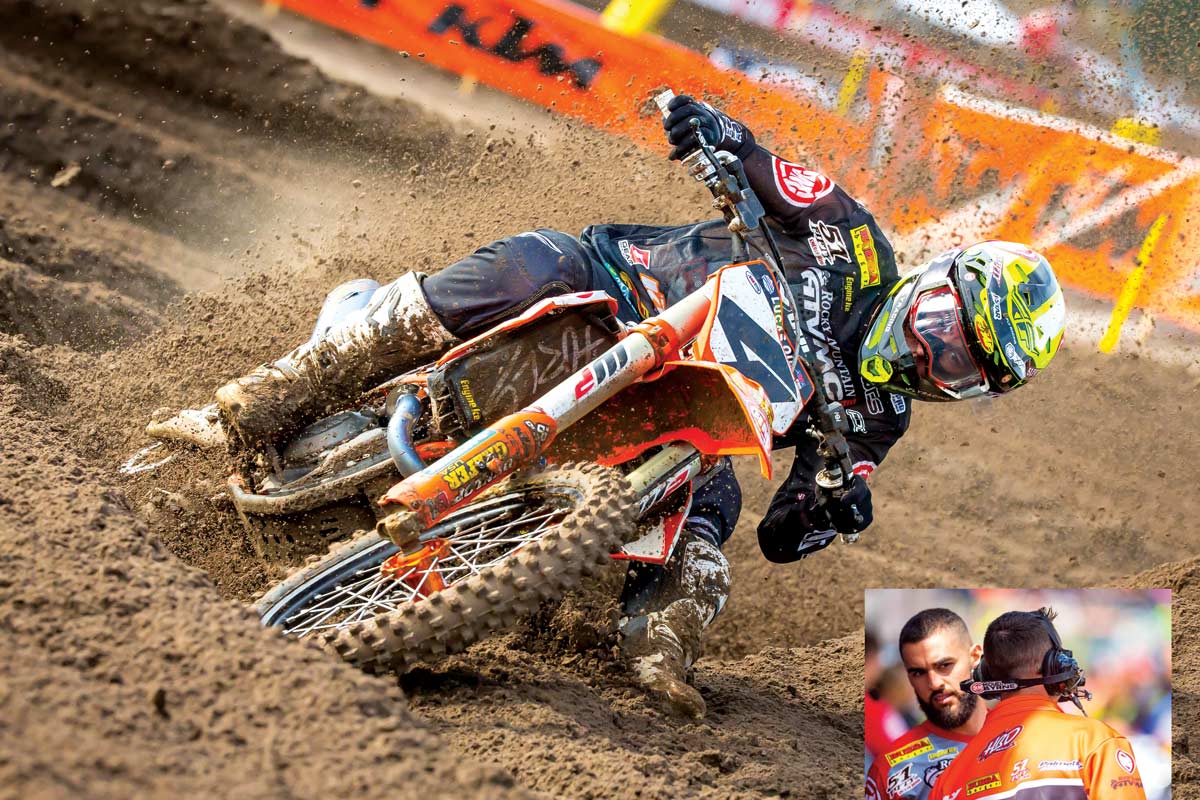

As manager of the Rocky Mountain ATV/MC KTM-WPS team, Michael Byrne relies on his own experience as a factory rider to get the most he can out of Blake Baggett (4), Benny Bloss (29 and with Byrne on the starting gate), and Justin Bogle (inset).

As manager of the Rocky Mountain ATV/MC KTM-WPS team, Michael Byrne relies on his own experience as a factory rider to get the most he can out of Blake Baggett (4), Benny Bloss (29 and with Byrne on the starting gate), and Justin Bogle (inset).
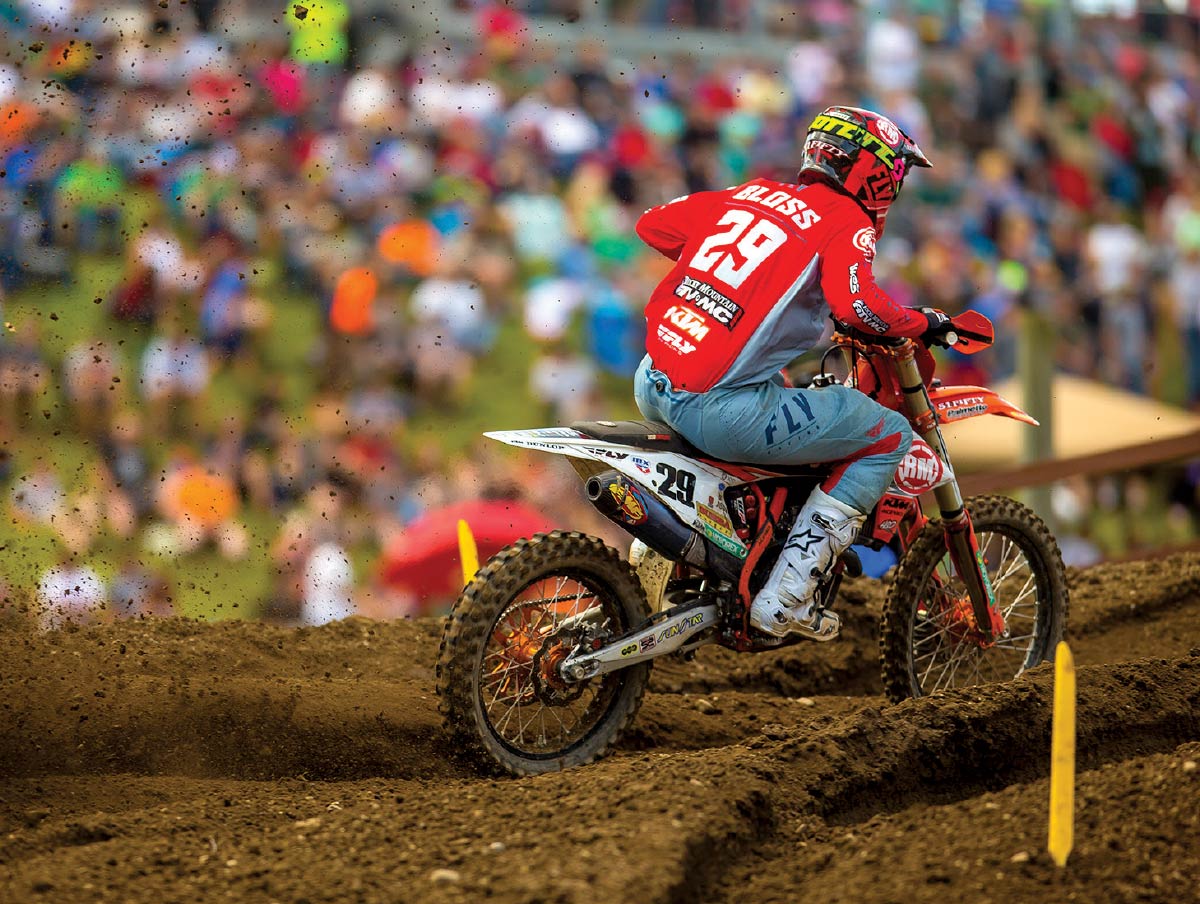
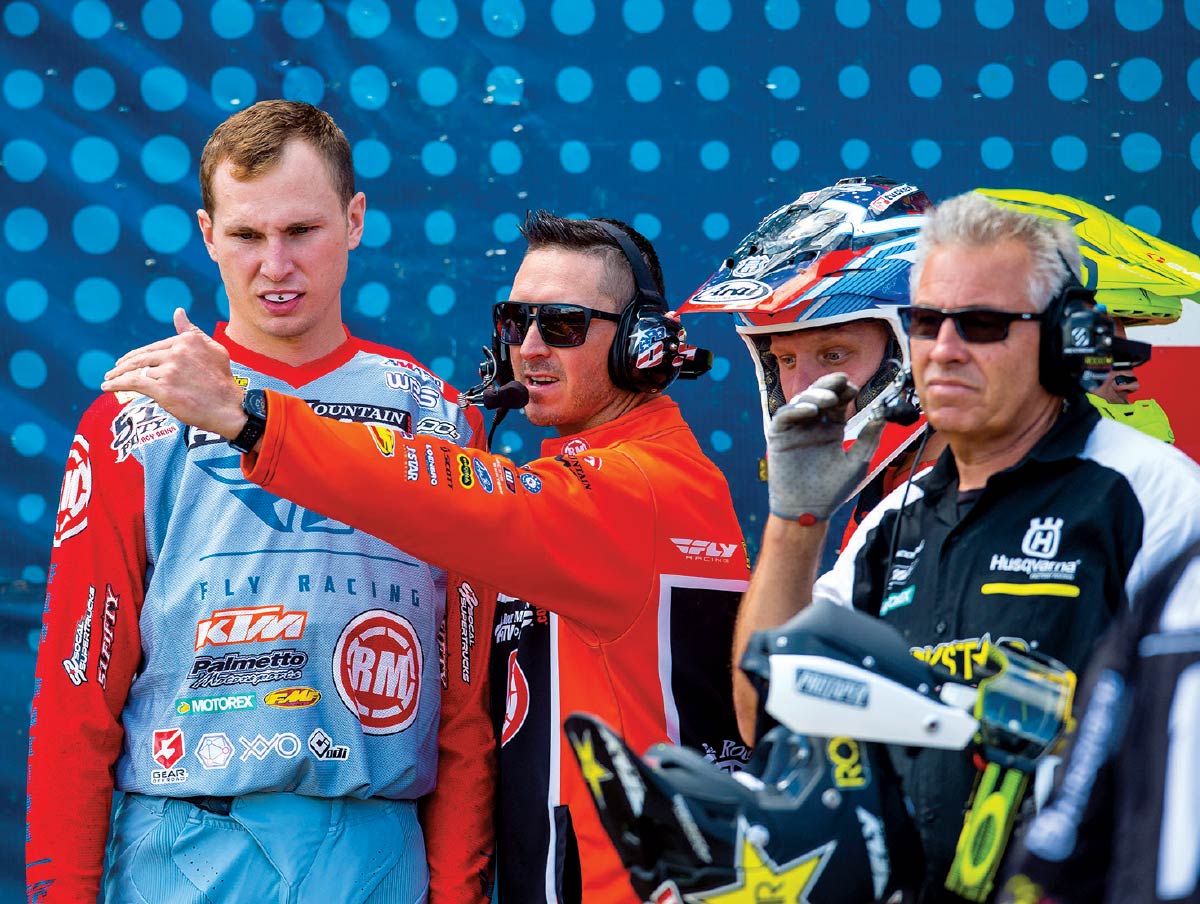



TONY ALESSI

TONY ALESSI
Byrne’s work with the #800 really opened some eyes and made others in the pits realize he was more than just an ex-rider looking for a job. When his relationship with MotoConcepts ended, Byrne started working with his old team, the Butler Brothers.



he veteran Andrew Short was nearing the end of his career, but he started ripping holeshots left and right as the two worked together to perfect third-gear starts on Short’s KTM 450 SX-F.
“When I worked with Byrner, he was transitioning from being a rider, and it was interesting,” recalls Short, now an endurance/rally racer. “From my perspective, how he approached racing was intelligent, and I improved a lot as a rider in a couple of days. And that’s saying something, because I was at the end of my career. He brought some intensity to my riding and how to work on my technique. He also helped with my speed, which, I needed that at my age. He’s got a good way of communicating his ideas in his right way. I think he’s a unique person who is very underrated. . . . I can honestly say I’ve never tried to reproduce those third-gear starts. That was just a unique situation!”
“He’s so good at working with the riders, mentally, being that he was a rider,” team owner Forrest Butler says. “He’s talented with the bike too. I would say that’s probably changed a lot. If he could go back and do his own racing career over again, only go about testing for his own stuff, I think he would do it the way he does things now. He knows he’s found the more efficient way to do it.”
After Short, Byrne went over to his old friend Chad Reed’s team and stayed with his fellow Aussie through TwoTwo Motorsports folding and Reed heading to Yamaha for 2017. Byrne rode with Reed and helped with testing and race-day preparation, and they were also training partners. But when Reed’s future was up in the air, Byrne’s old boss Butler came calling to help him in more of a managerial role. Reed and Byrne haven’t spoken since. It’s not something that Byrne really wants to get into much.
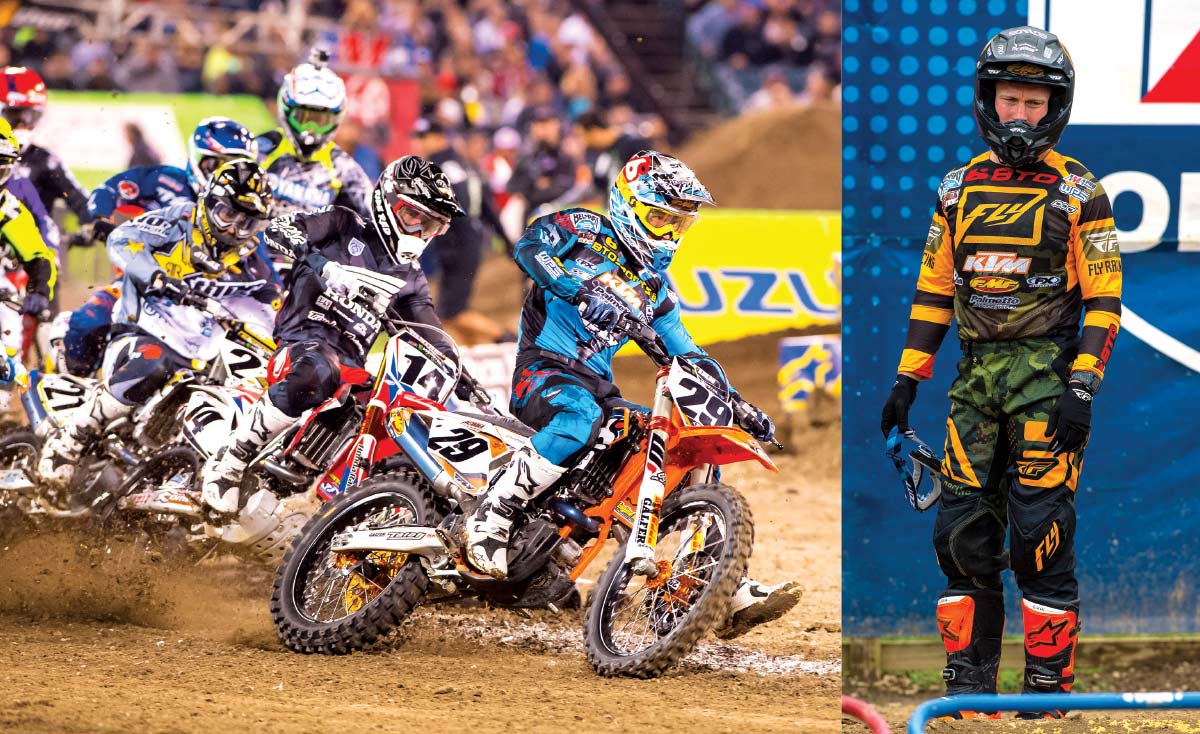



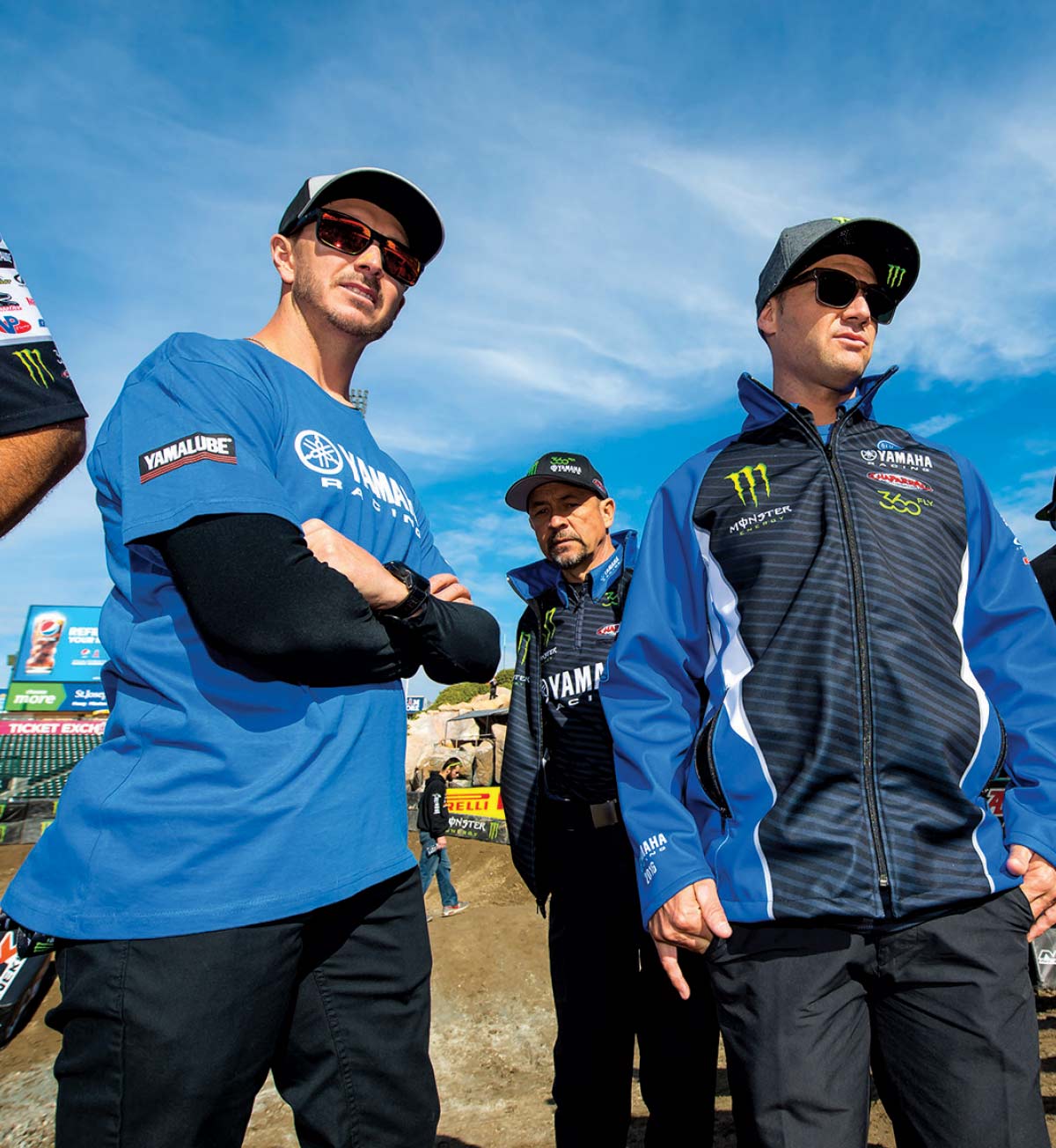
Byrne has also managed Team Australia’s Motocross of Nations efforts the last few years, and although the green-and-gold haven’t made the podium with him as manager, they’ve had some very good teams.
ne area where Byrne excels, according to the people we spoke to, is his ability to break down film of practice sessions and make changes to the bike or lines on the track. It’s something he’s become very knowledgeable about.
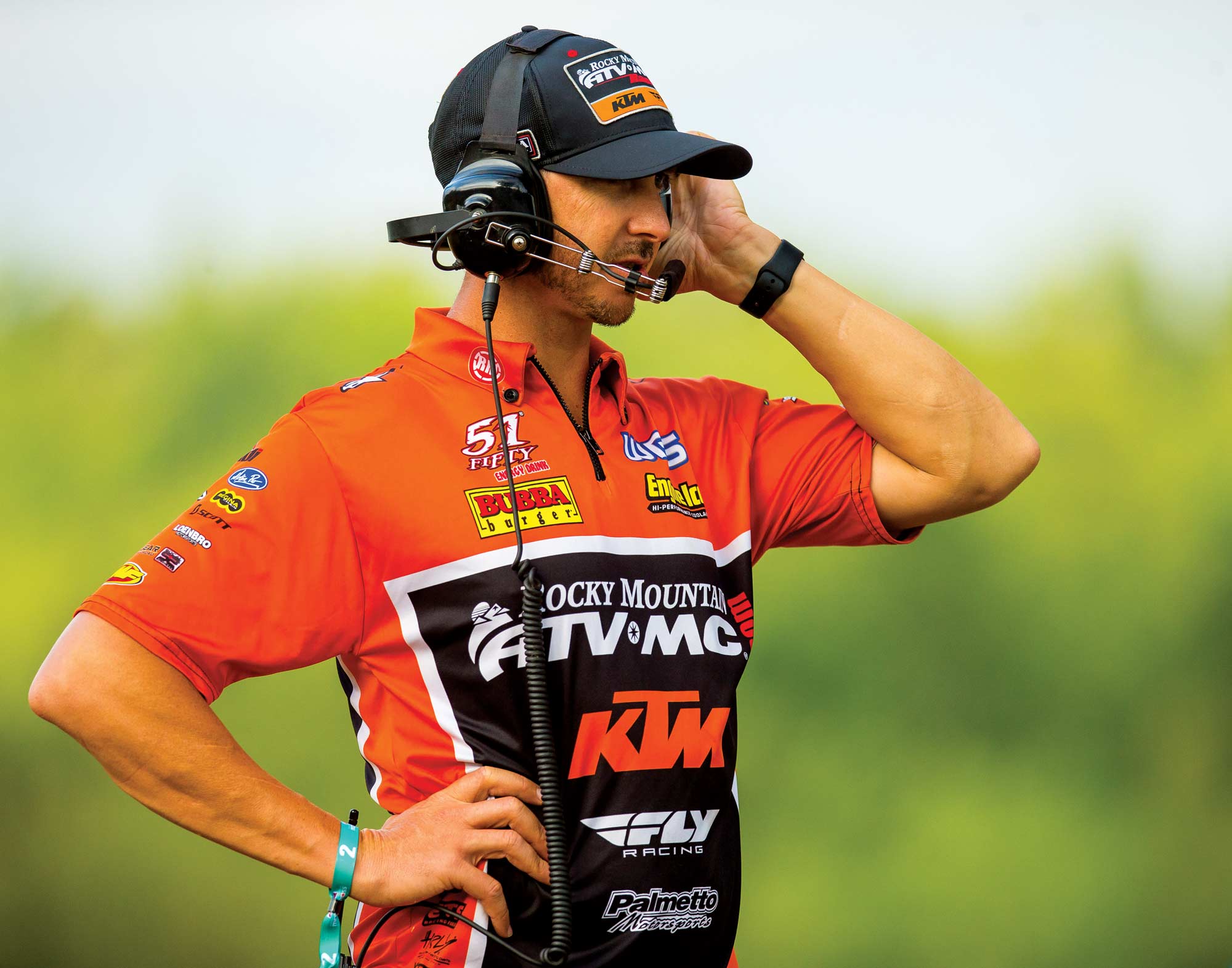

Byrne has helped the Rocky Mountain ATV/MC KTM-WPS team accomplish something he couldn’t in his own career: win an AMA Supercross main event, which Blake Baggett did at Glendale in January. With Byrne’s advice and instruction, many feel it won’t be long before they win again.

Byrne has helped the Rocky Mountain ATV/MC KTM-WPS team accomplish something he couldn’t in his own career: win an AMA Supercross main event, which Blake Baggett did at Glendale in January. With Byrne’s advice and instruction, many feel it won’t be long before they win again.



MICHAEL BYRNE

MICHAEL BYRNE
“The testing and the knowledge stuff, I guess, as far as bike setup goes, it’s more that I think I can usually pick apart what they need just from what they say, and then actually breaking what they say down into what everyone else can understand,” he says. “Sometimes they’re trying to say it but they’re not saying it right, and it’s just confusing everybody! I can take what they’re saying and go, ‘I know exactly what you’re saying,’ then turn to the team and say, ‘What he means is this.’ They tell me what they’re feeling and then I usually turn to the suspension guy and say, ‘All right, do this.’”
“Just because you’re a fast rider doesn’t mean that it translates over to other things,” Butler says. “He’s just one of those select few that, in my eyes, had it, and then I think everything he’s done with the team and people he’s worked with has proven it.”
manager also has to deal with lots of personalities from day to day. The team spends a lot of time together, and things can get tense. Of course the riders are another deal entirely, as their emotions go up and down with every lap and every moto. And then there are the people surrounding these riders—parents, wives, girlfriends, agents, trainers, whoever. It can be . . . a lot.
“It gets stressful sometimes between everybody,” Byrne says. “Just keeping everybody’s emotions in check, whether it be the riders, their families, moms, dads, girlfriends. . . . We’re trying to do this one thing that everyone’s trying to push towards, but you’ve got to try and keep everyone’s emotions in check so no one’s panicking because he’s thinking this is all wrong. The hard part is just to take that step back. If they just took a step backwards and took another look at it, they might realize they’re kind of freaking out for nothing.”
No backward steps taken for Michael Byrne, though. He’s proven himself to be better working with riders than he was as a rider—and that’s saying something. His own racing career has passed, but the sky’s still the limit for Byrner. 


